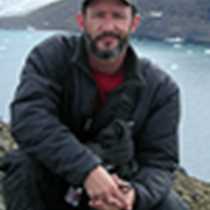During the waning days of World War II, a plan was put together by the British to help keep an eye on possible German expansion into the Southern Ocean. Operation Tabarin, named for a nightclub, was a chance for the British to place operational science bases all along the Antarctic Peninsula. The first of these was Base “A” also known as Port Lockroy. Edouard Lockroy was a French politician who helped Charcot’s French Antarctic Expedition in 1903-1905. The base was built shortly after the war and did quite a bit of atmospheric research in the 1950s. In the 1960s, the base was shut down and fell into disrepair. It was refurbished and rebuilt in the early 1990s and then later on another hut was built to house the summer time residents. This small group runs the post office, museum and store. It is one of the most visited sites anywhere on the Antarctic Peninsula.
This morning we stopped at two places in Port Lockroy—Jougla Point and the small island of Goudier where the huts are found. Our visit to Jougla produced great views of shags and Gentoo penguins, which have just started to hatch chicks. On Goudier there were more Gentoos, some nesting right next to the front door of the main hut. Snowy sheathbills also patrolled the nesting areas. Purchases were made, postcards written, and displays were mulled over by the guests on a beautiful day. Once all back on board, a polar plunge was offered and those that participated “enjoyed” an invigorating dip in water that was just above the freezing point.
National Geographic Explorer then made her way north and west as this would be our last outing of the expedition. Next stop would be in Ushuaia, Argentina, where our voyage will end.







